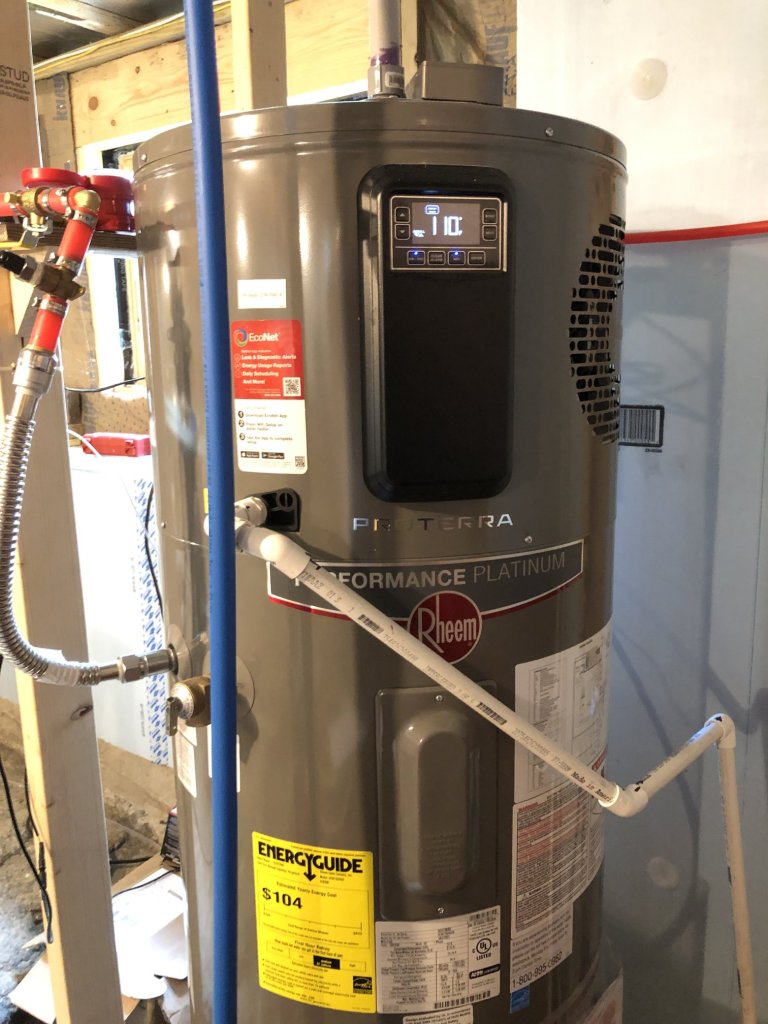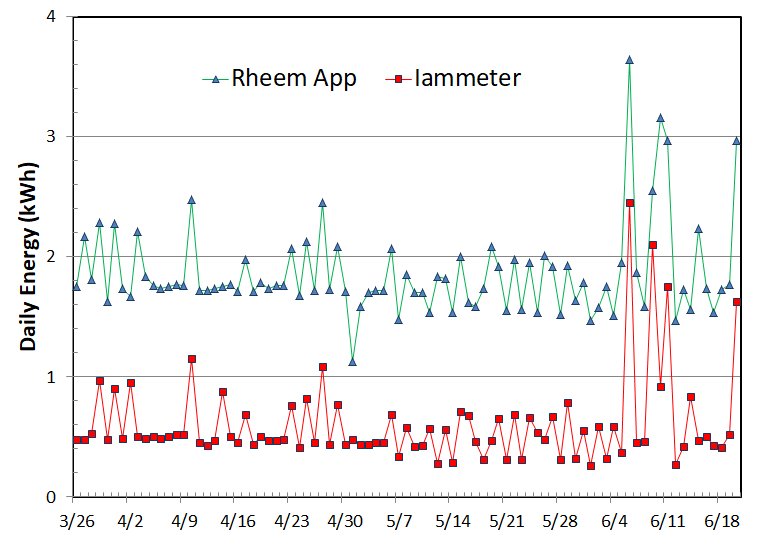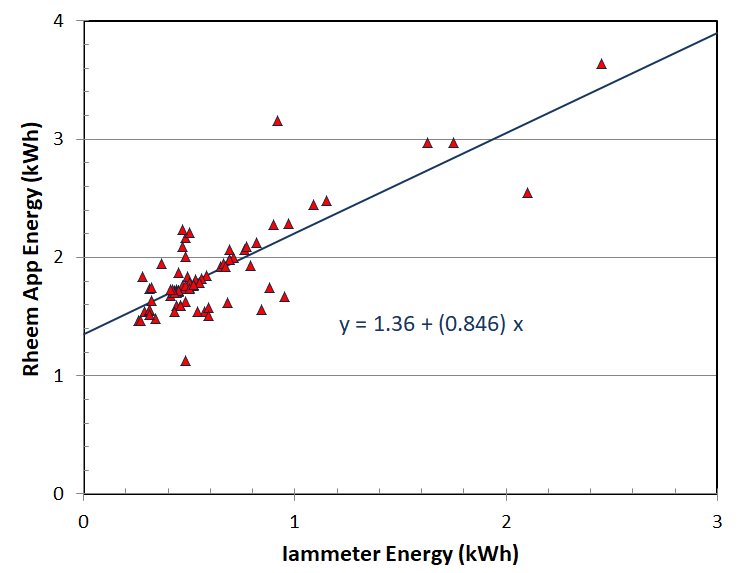In my Maine Guest Cottage I have installed a 50 gallon, Rheem hybrid heat pump hot water heater. I purchased this unit at Home Depot about 16 months ago. The price was roughly $1600 with a large $800 rebate from Efficiency Maine. My cost then was only about $800. My other option was an electric hot water heater which would have cost me about $600 and did not come with a rebate.

There were cheaper heat pump hot water heaters available at the time but I was enamored by the WiFi interface that came with the Rheem unit. This, along with the Rheem Econet smart phone App, would allow me to remotely change the unit’s settings and also monitor its daily (even hourly) electric use.
The energy guide for this unit suggested that it would cost $104 per year to operate, based on an estimated annual electric us of 866 kWh and an electric price of $0.12/kWh. Here in Maine I pay about $0.30 per kWh for electricity.
I installed the Rheem unit in my unheated cottage crawl space. Most of our hot water use will be in the summer when we actually have guests staying there. Heat pump operation during that period should help dehumidify the crawl space. In the winter months when we do not use much hot water I will likely have to switch the unit to resistive electric mode as the crawl space will be cold and any heat removed from the crawl space air would have to be made up by some other heating system.
This coming winter I intend to make detailed measurements to understand the energy performance of this unit. But already some information has emerged.
The first issue is the inaccuracy of the energy use reported by the Rheem Econet App. For my first six months of operation this was my only measure of energy use for the hot water heater. According to the App the unit was averaging 2.0 kWh/day. For most of this time no one was living in the cottage so that hot water use was minimal. This daily energy corresponds to an annual use of 730 kWh per year — using essentially no hot water use! (That is, this is the energy loss from the 50 gallon tank.) Imagine what the energy use would be if a family of four was using hot water for showers, laundry, and such. I suspected the energy consumption data were inaccurate.
So, I connected up a single-phase iammeter energy monitor to this 220VAC circuit to measure energy use of the Rheem unit. I found that the Rheem unit used significantly less energy than its app reported. The graph below compares the daily electric use as measured by the Rheem Econet App to that independently measured with my iammeter energy monitor for a three month period.

The Rheem Econnet App for this three month period reports an average energy use of 1.88 kWh/day while the iammeter measured 0.62 kWh/day. The Rheem’s own measurements while highly inaccurate, are correlated to the actual energy use. The graph below demonstrates this correlation. The R-square for this fit is 88%.

I do not understand why Rheem has not provided accurate power measurement on their $1600 hot water heater when numerous companies are selling smart plugs with accurate power measurement for $10.
The second problem I have with the Rheem App is that it seems to have a mind of its own. There were times this last year when I wanted to compare the energy use in electric resistive heat mode to that used in heat pump mode. Accordingly I would use the App to set the mode to resistive heat. A few days later, without warning, I would discover that the unit had returned to heat pump mode though I had not made this change. This is something I will investigate further this coming year.
The third problem I found was that the temperature of the water provided appears to be significantly lower than that displayed on the app or on the unit’s LCD display.
Before our first guests arrived this summer I thought I should make sure we had adequate hot water. The Rheem water temperature was set to 120F and it was in heat pump mode. I took a shower. With the shower mixing valve set to maximum hot the shower was comfortable for me. Admittedly, I like hot showers. This caused me to worry that the hot water would not be sufficient for 2-3 consecutive showers. Accordingly I raised the Rheem set temperature to 130F. But I began to doubt that the water leaving the Rheem tank was at the specified temperature.
So I decided to install a temperature sensor in the hot water supply line from the Rheem hot water tank. This was accomplished with a DS18B20 sensor inserted into a 3/4 in. “T” fitting that I installed on the output water line from the hot water heater. I programmed an ESPHome D1mini board to monitor this sensor and connected it to my Home Assistant system. Initial measurements suggest the actual temperature of the water is 10-15F lower than the 130F set temperature.
The last thing I will mention is the instrumentation that we have added in preparation for our full year of study coming up. In addition to the aforementioned temperature sensor, I have installed two water meters with pulse output, one on the water supply line to the guest cottage and the other on the HW supply line leaving the Rheem HW heater. These meters will allow me to monitor CW and HW use in 1 gallon increments.
The other feature that I installed was a “dump line” from the hot water heater. To study the performance of the hot water heater I will need to regularly use hot water. But no one is living in the cottage through the winter. To address this issue I installed a motorized valve downstream from the HW meter that will allow me to remotely, and under program control, “dump” hot water down the drain. This will, of course, result in wasted energy — but this will be necessary to study the performance of the Rheem under conditions that replicate 2-4 people living in the cottage.
